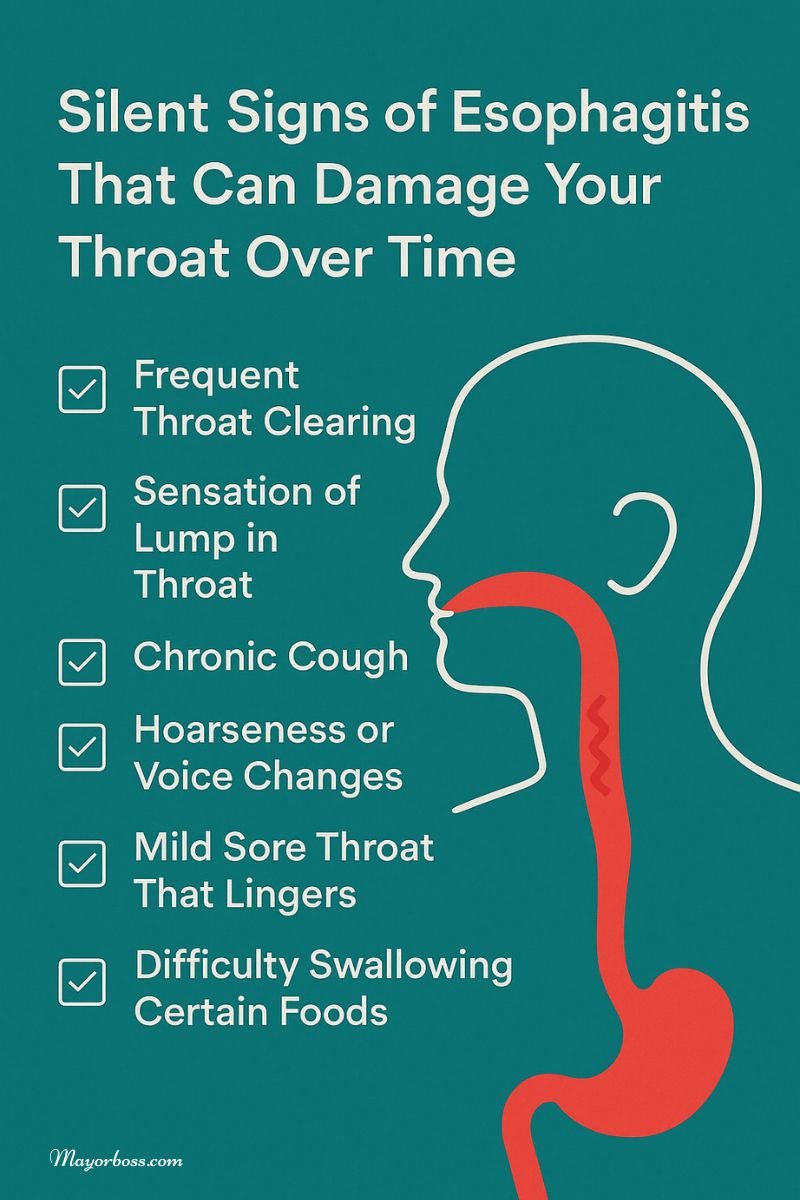6 Signs of Strep Throat
Strep throat is a common illness that can catch you off guard when you least expect it. Caused by a type of bacteria known as Group A Streptococcus, this infection typically starts in the throat and can give you a great deal of discomfort. Although anyone can get strep throat, children and teenagers are more prone to it because of their close contact in schools and other shared spaces. Yet grown-ups can find themselves battling this annoying infection, too. This article will dive deeper into six telltale signs of strep throat.
According to health experts, when streptococcus bacteria settle in your throat, they irritate the tissues, leading to swelling, redness, and other symptoms that we will discuss in detail below. Strep throat can lead to serious complications if left untreated, such as infections in your ears, kidney inflammation, or even rheumatic fever, which may cause damage to the heart. Rest assured, with early detection and proper treatment, most cases of strep throat resolve without long-lasting problems.

Below are six signs that commonly appear when a person has strep throat. If you find yourself or a loved one showing these symptoms, consult your healthcare provider for an accurate diagnosis and treatment plan.
1. Sudden and Severe Sore Throat
A relentless sore throat is usually the first signal that strep bacteria have arrived. Unlike a mild irritation that creeps up gradually, a strep-related sore throat tends to strike suddenly. You might wake up feeling like sandpaper is scraping the back of your throat. This soreness can be so intense that it disrupts your everyday tasks, like talking on the phone or enjoying a favorite meal. While a sore throat can also be caused by viral infections, a quick onset of strong pain often hints at strep throat.
2. Difficulty Swallowing
Closely tied to a sore throat is a troublesome difficulty in swallowing. When the tissues in your throat are inflamed, trying to gulp down even a sip of water might feel like a painful chore. Some people end up avoiding solid foods altogether, favoring soothing liquids like tea or warm broth. But do not wait too long for relief; if this difficulty persists or worsens, you should talk to a medical professional. Prompt treatment can help you recover quickly and keep your body properly nourished.
3. Red and Swollen Tonsils
One of the most visible signs of strep throat can be seen if you open your mouth and take a good look at your tonsils. When strep bacteria move in, the tonsils often appear larger than usual and look like they are coated in bright red paint. This swelling, along with a deeper color, is a clear indication that your immune system is hard at work fighting the infection. In some cases, you might even notice small red spots at the back of your throat, adding to your discomfort.
4. Fever
A fever is another classic symptom of strep throat. Your body’s temperature might shoot above its usual range—commonly 100.4°F (38°C) or higher. Fever is the body’s way of battling unwelcome germs, and in the case of strep throat, it can help drive away the bacteria more quickly. However, you should pay close attention if your fever stays high for more than a day or two or if you experience additional signs such as chills, persistent headaches, or extreme tiredness. Staying hydrated by drinking water and other fluids is essential while your body fends off the infection.
5. White Patches or Streaks
If you peer inside your mouth and notice white patches or streaks coating your throat or tonsils, there is a decent chance that you have strep throat. These spots are typically made up of white blood cells, bacteria, and other debris. While white patches can sometimes occur in other illnesses—like mononucleosis, for instance—when they appear alongside a sudden, severe sore throat and a fever, they are more likely related to a strep infection. These spots might make swallowing even more painful, so it is important to contact your healthcare provider if this symptom lingers or becomes severe.
6. Swollen Lymph Nodes
Your body has a built-in alarm system known as the lymphatic system, which kicks into gear when bacteria or viruses show up. You can often feel this in the form of swollen lymph nodes just below your jaw and along the sides of your neck. When these nodes become tender or enlarged, it suggests that your body is fighting off an infection, such as strep throat. These swollen areas may be sensitive to the touch, and you might experience stiffness in your neck. Keep a gentle eye on them. If they remain swollen or worsen over time, it is a strong indication that you need proper medical evaluation.
When to See a Healthcare Provider
Because strep throat can spread from person to person, it is wise to contact your doctor or healthcare provider if you suspect you have it. A quick diagnostic test can confirm the presence of strep bacteria, and a course of antibiotics is often prescribed to clear up the infection. Usually, you will begin feeling better within a couple of days after starting medication. Completing the full course of antibiotics is important, even if you feel like you have bounced back earlier than expected.
Recovering and Preventing Future Infections
Recovery typically involves plenty of rest, fluids, and possibly over-the-counter medications for pain relief. Warm beverages or soothing throat lozenges can help reduce discomfort. It is also beneficial to avoid sharing utensils, cups, or towels with others to prevent spreading the infection. Washing your hands frequently and staying away from crowded places while you are sick can also curb the spread of germs.
Even after you feel much better, continue to watch your throat and general health. If any symptoms persist, revisit your doctor to rule out complications. By taking these simple steps, you will reduce the chance of encountering strep throat again and protect the well-being of your family, friends, and community.
Strep throat can certainly be an unpleasant experience, but the good news is that it is highly treatable when detected early. Keep an eye out for these six signs—especially a sudden sore throat, difficulty swallowing, and those characteristic white patches—and you will be well on your way to pinpointing whether you have more than a common cold. With the right medical care and a watchful approach, you will be back to your regular routine before you know it.






